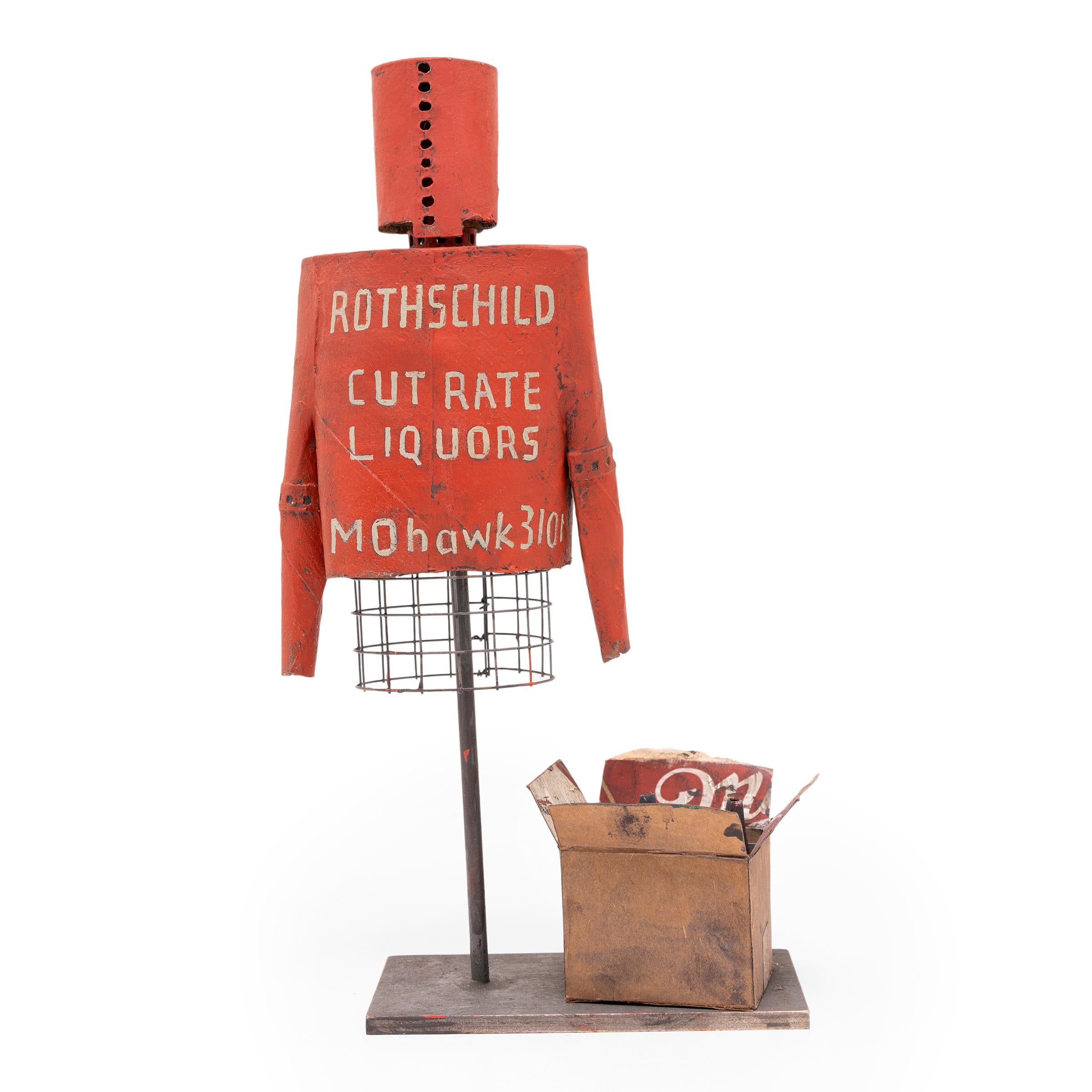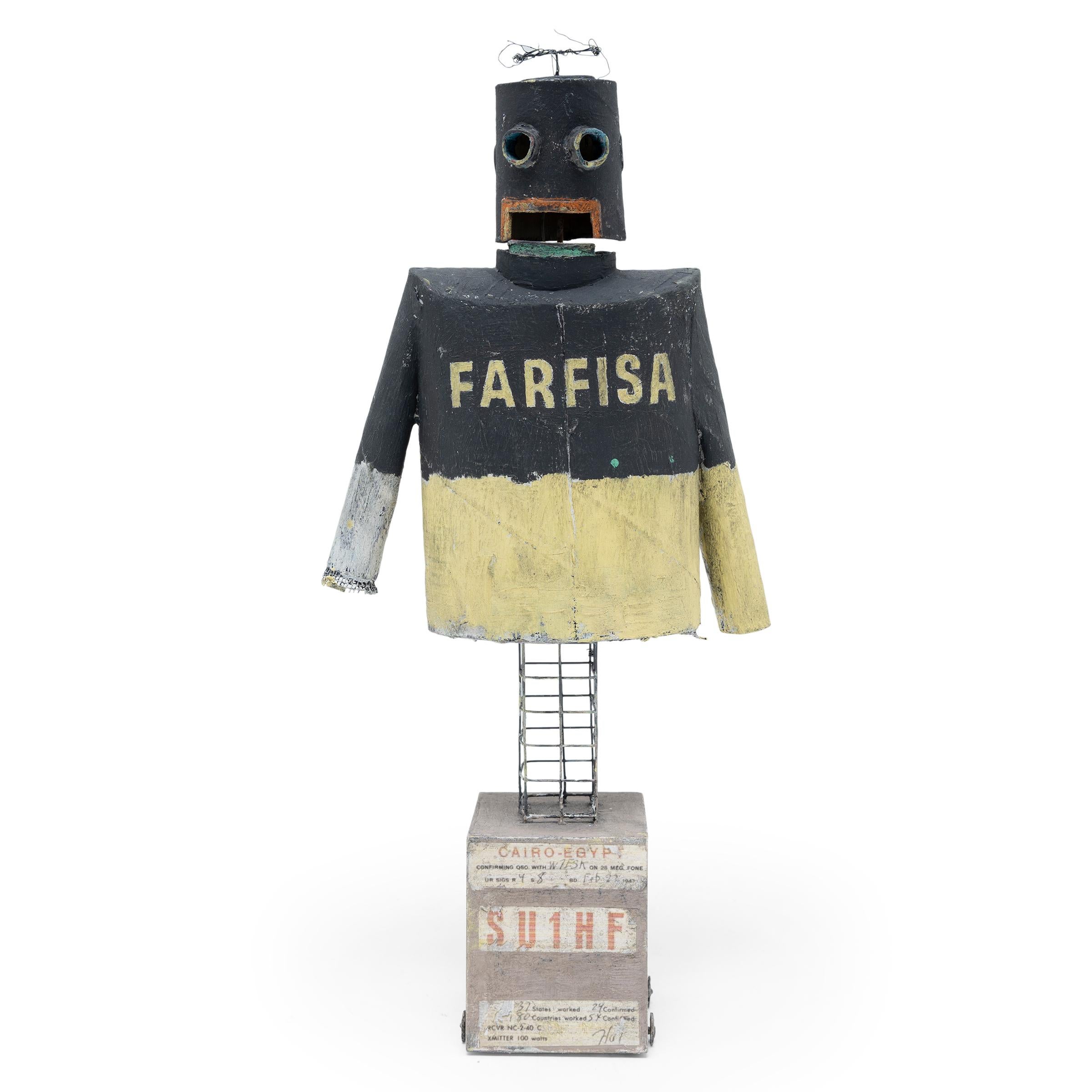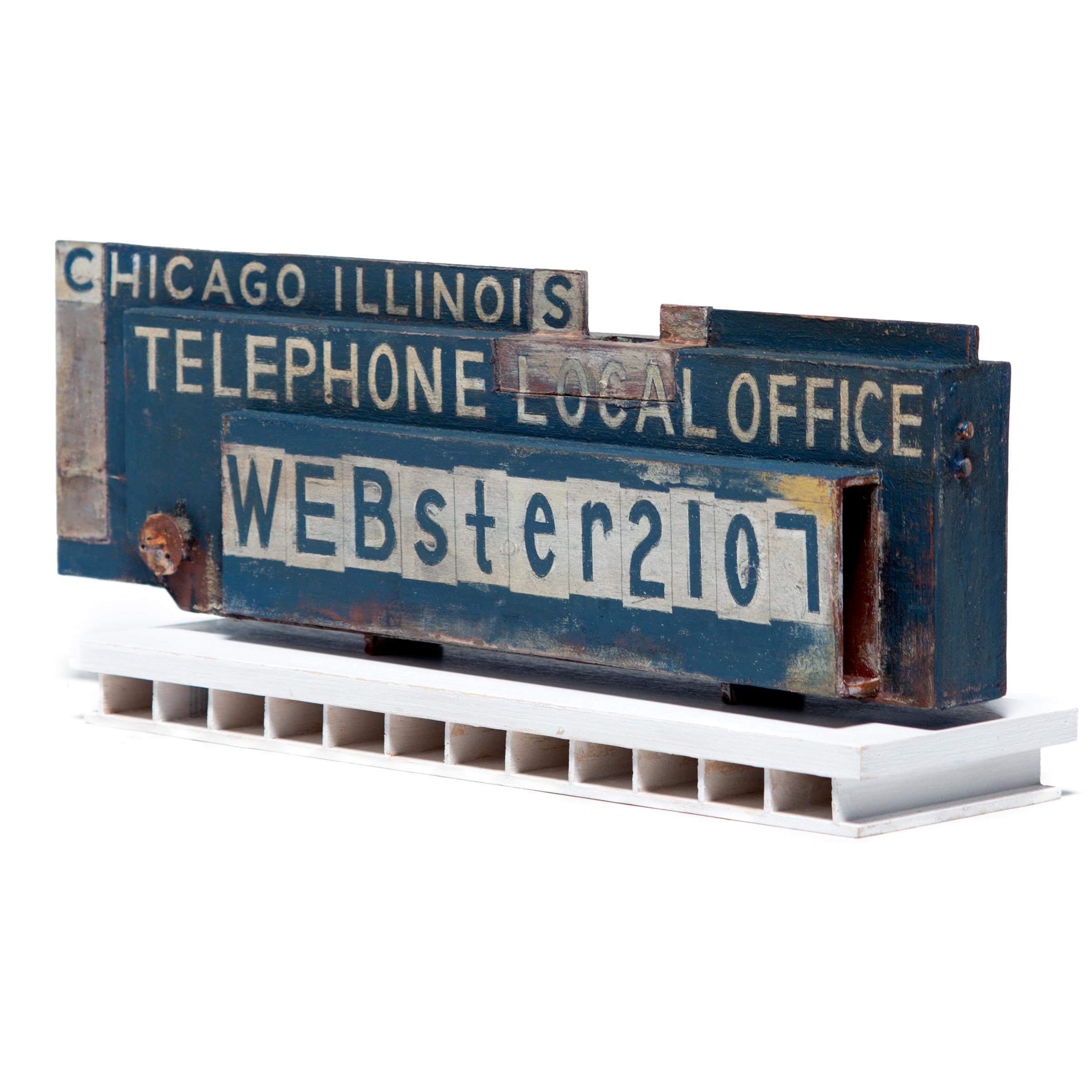Items Similar to 3 Carved Wood Plaques Outsider Modern Mid 20th Century Latin Gay LGBT Beefcake
Want more images or videos?
Request additional images or videos from the seller
1 of 9
Juan Miguel3 Carved Wood Plaques Outsider Modern Mid 20th Century Latin Gay LGBT Beefcakec. 1940s/50s
c. 1940s/50s
About the Item
3 Carved Wood Plaques Outsider Modern Mid 20th Century Latin Gay Male LGBT Beefcake
Each plaque is 16 x 10 x 1 1/4 inches. Two are vertical and one is horizontal. Each is incised with the signature Juan Miguel on the lower right. We've had the plaque fully restored. Each has a wire on the back and are ready to hang.
There are a number of Juan Miguel listed artists but we can't seem to identify the person who created these striking sculptures.
- Creator:Juan Miguel
- Creation Year:c. 1940s/50s
- Dimensions:Height: 16 in (40.64 cm)Width: 10 in (25.4 cm)Depth: 1 in (2.54 cm)
- Medium:
- Movement & Style:
- Period:
- Condition:
- Gallery Location:New York, NY
- Reference Number:1stDibs: LU1156210413142
About the Seller
5.0
Platinum Seller
These expertly vetted sellers are 1stDibs' most experienced sellers and are rated highest by our customers.
Established in 2008
1stDibs seller since 2019
165 sales on 1stDibs
Typical response time: <1 hour
- ShippingRetrieving quote...Ships From: Pawling, NY
- Return PolicyA return for this item may be initiated within 3 days of delivery.
More From This SellerView All
- Contemporary Aluminum Eagle Bird Sculpture Large Unique Metal Americana Folk ArtLocated in New York, NYContemporary Aluminum Eagle Bird Sculpture Large Unique Metal Americana Folk Art Similar in design to the US Post Office logo from the 1950's. Signed "...Category
1970s Folk Art Still-life Sculptures
MaterialsMetal
- 1961 Coty Award Plaque Kenneth Hairdresser Jacqueline Onassis Bronze FashionLocated in New York, NY1961 Coty Award Plaque Kenneth Hairdresser Jacqueline Onassis Bronze Fashion Bronze on wood. The wood plaque measures 12 3/4" by 20 3/4 inches. The bronze plaque itself is 13 3/4 x 8 3/4 inches and the the bronze inscription, which reads "COTY, American Fashion Critics Special Award 1961 to KENNETH of LILY DACHE...Category
1960s American Modern Figurative Sculptures
MaterialsBronze
- STRIDENT MAN Carved Wood Sculpture Hollywood WPA Modernist Puppet Mid-CenturyLocated in New York, NYThis 18 x 9 x 4 inch carved wood sculpture is unsigned and comes directly from the artist's family. Louis 'Lou' Bunin (28 March 1904 – 17 February 1994) was an American puppeteer, artist, and pioneer of stop-motion animation in the latter half of the twentieth century. While working as a mural artist under Diego Rivera in Mexico City in 1926, Bunin created political puppet shows using marionettes...Category
1940s American Modern Figurative Sculptures
MaterialsWood
- Six Vintage Stainless Steel Sculptural Dining Chairs Sculpture Mid-Century Set 6Located in New York, NYSix Vintage Stainless Steel Sculptural Dining Chairs Sculpture Mid-Century Set Kings and Queens could feats on these sculptures, this stunning set of six dining chairs. They are art...Category
1950s Modern Still-life Sculptures
MaterialsStainless Steel
- "Mercury" NYC 1931 Bronze 5th Ave Traffic Light Sculpture American Art Deco WPALocated in New York, NY"Mercury" NYC 1931 Bronze 5th Ave Traffic Light Sculpture American Art Deco WPA In the late 1920s, Joseph Freedlander was asked by the City of New York ...Category
1930s Art Deco Figurative Sculptures
MaterialsBronze
- Industrial Machine Age American Scene WPA Mid 20th Century 1939 SF World's FairLocated in New York, NYIndustrial Machine Age American Scene WPA Mid 20th Century 1939 SF World's Fair HAIG PATIGIAN (American/Armenian, 1876-1950) Aeronautics Pediments Two Plaster Casts, c. 1930s each 13.25 x 14.75 x 6 inches It's possible these moquettes were created for the 1939 World's Fair, the Golden Gate International Exhibition in San Francisco. Provenance: Private Collection of Lois M. Wright, Author of "A Catalogue of the Life Works of Haig Patigian, San Francisco Sculptor, 1876-1950),” 1967 Loan to Oakland Museum of California (Oakland, CA) BIO Haig Patigian is noted for his classical works, which are especially numerous in public venues in San Francisco, California. Patigian was born in Van, Armenia, which at that time was under Turkish rule. Haig was the son of Avedis and Marine Patigian, both teachers in the American Mission School there. He and his older brother showed an aptitude for art early on and were encouraged by their parents. Their father himself had taken up the new hobby of photography. The 1880s were harsh times, however, for many Armenians under an oppressive rule by the Turkish government. Many people were fleeing to the safety of the United States. Suspicious Turkish authorities accused his father of photographing city structures for the Russian government, and in 1888 he fled for his life to America. Haigs father made his way to Fresno, California, and began life anew as a ranch hand. Within two years he sent for his wife, as well as Haig, his three sisters and brother, and in 1891 the Patigians made the journey from Armenia. Haigs father, an industrious man, worked on various farms, and eventually bought his own ranch and vineyard. It was among fertile farmland of Fresno that Haig grew up. Young Haigs education consisted of teachings by his parents and by intermittent attendance in public schools. Although he had dreams of becoming an artist, he did not have the opportunity for formal study of art, and began working long days in the vineyards around Fresno. At age seventeen, Haig made a step towards his dreams and apprenticed himself to learn the trade of sign painting. In his spare time he nurtured his interest in art by painting nature and life scenes with watercolors and oil paints. When his sign-painting mentor left Fresno, Haig opened his own shop and made a name for himself in the town. San Francisco, in the meantime, had been attracting artists since the Gold Rush and had become a thriving art center. Within a few years, Haig had put aside several hundred dollars to move to San Francisco, joining his brother who was already working there as an illustrator. In 1899, when he was twenty-three, Haig had saved enough money to enroll at the Mark Hopkins Art Institute in San Francisco. Like many aspiring artists of his time, Patigian supported himself by working as a staff artist in the art department of a local newspaper, and in the winter of 1900, nearing his 24th birthday, Haig began work for the San Francisco Bulletin, producing cartoons, black and white illustrations, as well as watercolors. In 1902 tragedy struck Haig and his family. His 29-year-old brother died of pneumonia, and then his frail mother died a short time later. Five months more saw his youngest sister, just out of high school, die too. Saddened and depressed, Haig moved out of the studio he had shared with his brother, and into a dilapidated studio in a poor section of town. During this time of sadness, Haig fed a growing interest in sculpture. In 1904 Haig created what he later called his "first finished piece in sculpture". The work, called "The Unquiet Soul", depicted a man thrown back against a rock while waves lash at his feet. The body was tense and twisted, with one hand, in Haig's own words, "searchingly leaning and clutching the rock, while the other masks his troubled head". The Press Club of San Francisco, which Haig had joined in 1901, put "The Unquiet Soul" on exhibition and local headlines proclaimed "Local Newspaper Artist Embraces Sculptor's Art", and "First Work Predicts Brilliant Future". With the support of friends and community acclaim, the young illustrator left his newspaper job and became a professional sculptor. The path of his new career was not easy though. Haig had never made much money working for the newspaper and his father needed help with growing debt from funeral expenses and business problems. From time to time Haig sold some artwork, but also occasionally borrowed from friends to pay the rent. He was the classic 'starving artist'. In the spring of 1905 a white-bearded 81-year-old stranger knocked on Haig's door. It was George Zehndner, from Arcata, California. Zehndner had been born in Bavaria, Germany in 1824, the son of a farmer. In 1849 he had come to America looking for prosperity, settling in Indiana, where he worked on a farm and learned English. He found his way to the West Coast in 1852. Penniless, he worked in various jobs from San Francisco to Sacramento, then found some luck working in the gold fields of Weaverville in Trinity County, and eventually moving to a farm on 188 acres near Arcata. In his 77th year in May of 1901, Zahndner had taken a trip to San Jose, where he stood in a crowd to see a man he thought much of, President William McKinley. McKinley was popular as 'the first modern president' partially because he realized going out to meet the common person increased his support. In September of that year, however, an anarchist assassinated the president while he stood in a receiving line at the Pan-American Exhibition in Buffalo, New York. Soon after, the city of San Jose erected a statue of the slain president in St. James Park. Zehndner took a second trip to San Jose where he visited the McKinley monument. Touched, Zehndner decided that, no matter the cost, his town of Arcata too would memorialize McKinley. George Zehndner had read about Haig in a newspaper article and asked if Patigian would create a heroic statue of the late President McKinley for Arcata. When asked how much it would cost, Haig responded, despite his borderline poverty, with the fabulous sum of $15,000. Zehndner agreed. The President was to be portrayed standing, wearing an overcoat, with his feet planted squarely on the ground. In the finished statue, one hand is held out before him in a typical posture of speaking, with the other hand holding the speech as his side. The 9-foot statue...Category
1930s American Modern Figurative Sculptures
MaterialsPlaster
You May Also Like
- "Case Runner, " Mixed Media Sculpture, 2022Located in Chicago, ILTo Chicago-based artist Patrick Fitzgerald, his sculptures are a means of traveling through time. Working from found materials, Fitzgerald constructs miniature soap box cars...Category
21st Century and Contemporary Outsider Art Figurative Sculptures
MaterialsWire
- "Grocery Getter, " Mixed-Media on Cardboard, Wire, and Wood, 2022Located in Chicago, ILTo Chicago-based artist Patrick Fitzgerald, his sculptures are a means of traveling through time. Working from found materials, Fitzgerald constructs miniature soap box cars...Category
21st Century and Contemporary Outsider Art Still-life Sculptures
MaterialsWire
- "Senzo Titulo (Michelangelo Antonioni), " Mixed-media Sculpture, 2022Located in Chicago, ILTo Chicago-based artist Patrick Fitzgerald, his miniature car sculptures are a means of traveling through time. Born from a fascination with the soap box...Category
21st Century and Contemporary Outsider Art Figurative Sculptures
MaterialsWood, Paper, Mixed Media, Oil
- "Rock-Ola Car, " Mixed-Media Sculpture, 2019Located in Chicago, ILChicago-based artist Patrick Fitzgerald uses his works as a means of resurrecting the idyllic worlds he once found in the industrial surroundings of his youth. Raised in Grand Rapids...Category
21st Century and Contemporary Outsider Art Figurative Sculptures
MaterialsWood, Paper, Mixed Media, Oil, Acrylic
- "XMITTER, " Mixed-Media on Cardboard, Wire, and Wood, 2022Located in Chicago, ILTo Chicago-based artist Patrick Fitzgerald, his sculptures are a means of traveling through time. Working from found materials, Fitzgerald constructs miniature soap box cars...Category
21st Century and Contemporary Outsider Art Figurative Sculptures
MaterialsWire
- "Drafting Car, " Multi-Media Sculpture, 2018Located in Chicago, ILChicago-based artist Patrick Fitzgerald uses his works as a means of resurrecting the idyllic worlds he once found in the industrial surroundings of his youth. Raised in Grand Rapids, MI, he looks to the raw beauty and inherent potential of his manufacturing hometown as an endless source of creative inspiration. Working from found materials, Fitzgerald constructs miniature versions of soap box cars...Category
21st Century and Contemporary Outsider Art Figurative Sculptures
MaterialsWood, Paper, Mixed Media, Oil, Acrylic
Recently Viewed
View AllMore Ways To Browse
Mid Century Modern Figurative Sculpture
Wood Plaque
Wood Plaques
Mid Century Plaque
Latin Sculpture
Wood Carved Plaque
Carved Wood Plaque
Vintage Wood Plaque
Mid Century Modern Plaques
Vintage Wood Plaques
Mid Century Male Art
Horizontal Mid Century Art
Mid Century Wire Sculpture
Midcentury Wire Sculpture
Mid Century Modern Wire Sculpture
Modern Sculpture Horizontal
Male Modern Sculpture
Wood Male Sculptures





